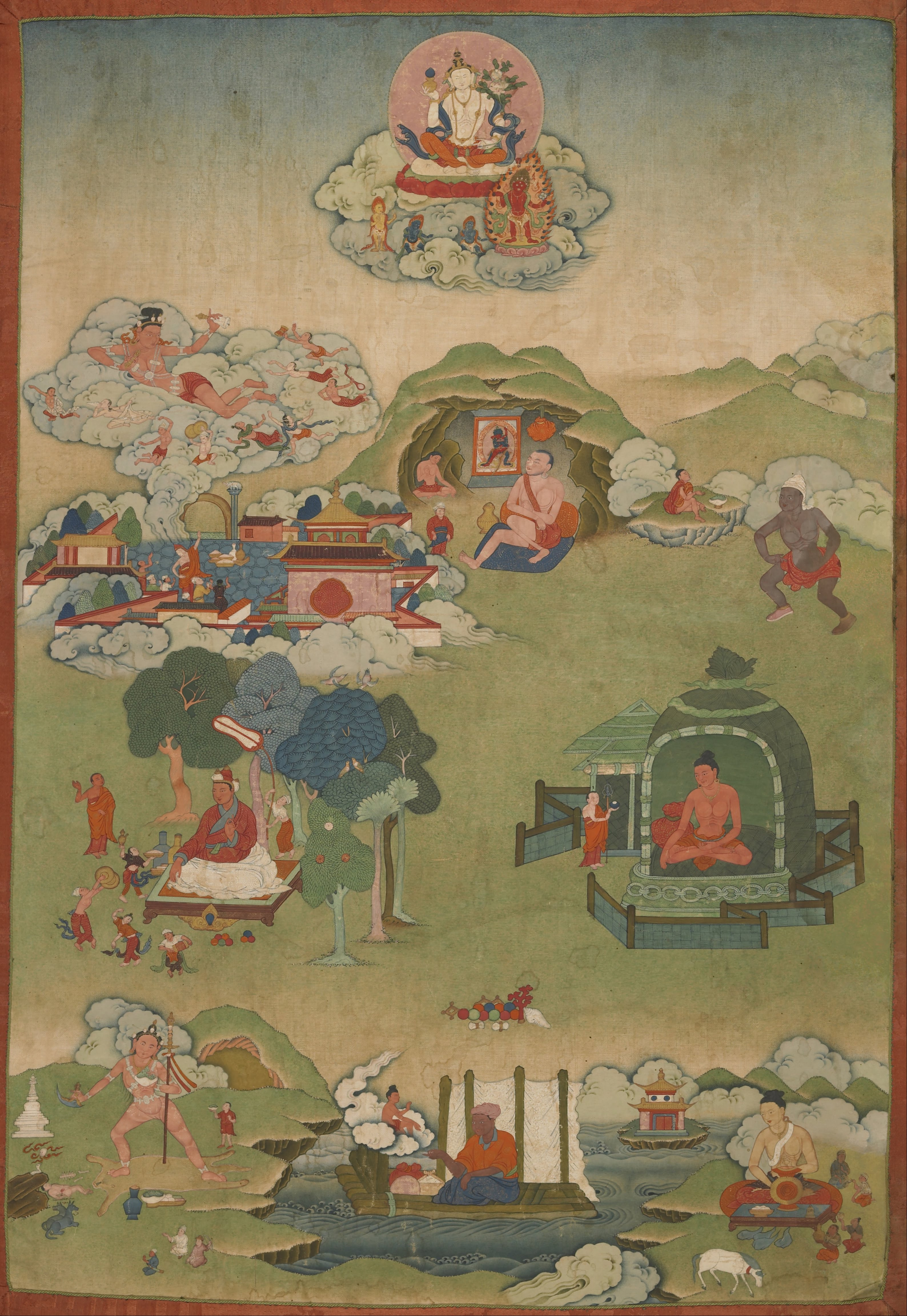|
Chinnamunda
Chinnamunda is a Buddhist goddess. Her attributes and iconography are similar to those of the Hindu goddess Chhinnamasta. Chinnamunda is often portrayed alongside Mekhala and Kanakhala, the two headless sisters, Indian Buddhist tantric adepts who appear on the list of the 84 Mahasiddha Mahasiddha (Sanskrit: ''mahāsiddha'' "great adept; ) is a term for someone who embodies and cultivates the " siddhi of perfection". A siddha is an individual who, through the practice of sādhanā, attains the realization of siddhis, psychic ...s. References {{reflist Female buddhas and supernatural beings ... [...More Info...] [...Related Items...] OR: [Wikipedia] [Google] [Baidu] |
Chhinnamasta
Chhinnamasta ( sa, छिन्नमस्ता, , "She whose head is severed"), often spelled Chinnamasta, and also called Ch(h)innamastika and Prachanda Chandika and Jogani Maa (in western states of India), is a Hinduism, Hindu goddess (Devi). She is one of the Mahavidyas, ten goddesses from the esoteric tradition of Tantra, and a ferocious aspect of Mahadevi, the Hindu Mother goddess. The self-decapitated nude goddess, usually standing or seated on a divine Maithuna, copulating couple, holds her own severed head in one hand and a scimitar in another. Three blood squirt, jets of blood spurt out of her bleeding neck and are drunk by her severed head and two attendants. Chhinnamasta is a goddess of contradictions. She symbolises both aspects of Devi: a life-giver and a life-taker. She is considered both a symbol of sexual self-control and an embodiment of sexual energy, depending upon interpretation. She represents death, temporality, and destruction as well as life, immort ... [...More Info...] [...Related Items...] OR: [Wikipedia] [Google] [Baidu] |
Mekhala And Kanakhala
Mekhala ( or Mahakhala – "Elder Mischievous Girl") "The Elder Severed-Headed Sister" and Kanakhala (Kankhala, – "Younger Mischievous Girl") "The Younger Severed-Headed Sister") are two sisters who figure in the eighty-four mahasiddhas ("great adept") of Vajrayana Buddhism. Both are described as the disciples of another mahasiddha, Kanhapa (Krishnacharya). They are said to have severed their heads and offered them to their guru, and then danced headless. Their legend is closely associated with the Buddhist severed-headed goddess Chinnamunda. Legend ''The Legends of the Eighty-four Mahasiddhas'' (, written by the Tibetan monk Mondup Sherab, which was narrated to him by Abhayadattashri c. 12th century) narrates the following tale: Mekhala and Kanakhala were daughters of a householder in Devīkoṭṭa (now in Bengal), who married them to sons of a boatman. Their husbands taunted them and their neighbours gossiped about them. Finally, Kanakhala could not take the abuse any mor ... [...More Info...] [...Related Items...] OR: [Wikipedia] [Google] [Baidu] |
Chinnamunda
Chinnamunda is a Buddhist goddess. Her attributes and iconography are similar to those of the Hindu goddess Chhinnamasta. Chinnamunda is often portrayed alongside Mekhala and Kanakhala, the two headless sisters, Indian Buddhist tantric adepts who appear on the list of the 84 Mahasiddha Mahasiddha (Sanskrit: ''mahāsiddha'' "great adept; ) is a term for someone who embodies and cultivates the " siddhi of perfection". A siddha is an individual who, through the practice of sādhanā, attains the realization of siddhis, psychic ...s. References {{reflist Female buddhas and supernatural beings ... [...More Info...] [...Related Items...] OR: [Wikipedia] [Google] [Baidu] |
Buddhist
Buddhism ( , ), also known as Buddha Dharma and Dharmavinaya (), is an Indian religion or philosophical tradition based on teachings attributed to the Buddha. It originated in northern India as a -movement in the 5th century BCE, and gradually spread throughout much of Asia via the Silk Road. It is the world's fourth-largest religion, with over 520 million followers (Buddhists) who comprise seven percent of the global population. The Buddha taught the Middle Way, a path of spiritual development that avoids both extreme asceticism and hedonism. It aims at liberation from clinging and craving to things which are impermanent (), incapable of satisfying ('), and without a lasting essence (), ending the cycle of death and rebirth (). A summary of this path is expressed in the Noble Eightfold Path, a training of the mind with observance of Buddhist ethics and meditation. Other widely observed practices include: monasticism; " taking refuge" in the Buddha, the , and th ... [...More Info...] [...Related Items...] OR: [Wikipedia] [Google] [Baidu] |
Mahasiddha
Mahasiddha (Sanskrit: ''mahāsiddha'' "great adept; ) is a term for someone who embodies and cultivates the " siddhi of perfection". A siddha is an individual who, through the practice of sādhanā, attains the realization of siddhis, psychic and spiritual abilities and powers. Mahasiddhas were practitioners of yoga and tantra, or ''tantrika''s. Their historical influence throughout the Indian subcontinent and the Himalayas was vast and they reached mythic proportions as codified in their songs of realization and hagiographies, or namtars, many of which have been preserved in the Tibetan Buddhist canon. The Mahasiddhas are the founders of Vajrayana traditions and lineages such as Dzogchen and Mahamudra. Robert Thurman explains the symbiotic relationship between Tantric Buddhist communities and the Buddhist universities such as Nalanda which flourished at the same time. Genealogy and historical dates The exact genealogy and historical dates of the Mahasiddhas are contentiou ... [...More Info...] [...Related Items...] OR: [Wikipedia] [Google] [Baidu] |


